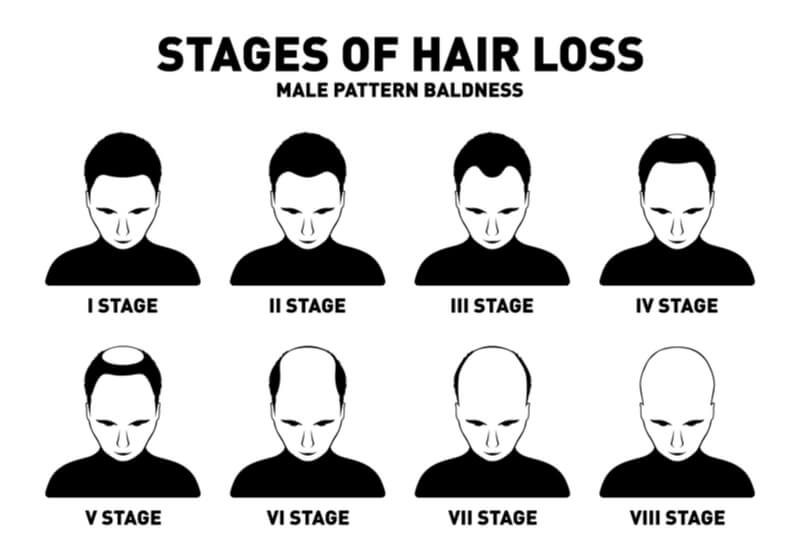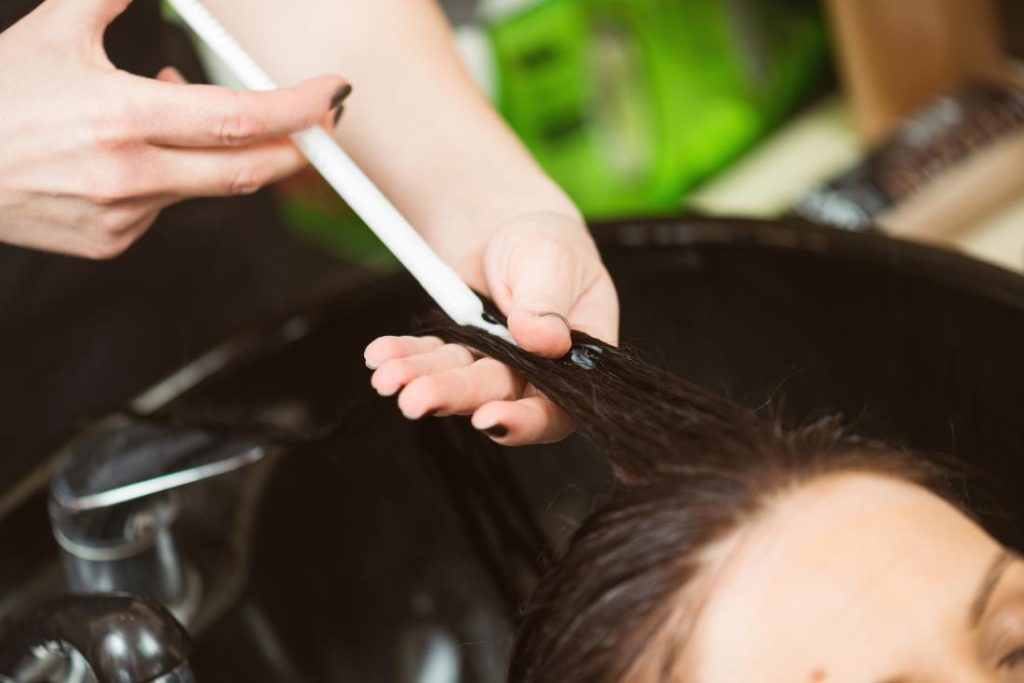Latest note on hairloss types and its remedy.
Biologists have recently unravelled many of the mysteries surrounding hair growth and loss in disorders like pattern baldness and alopecia areata. In this Special Feature, we examine the most recent advancements and therapies while also debating the viability of hair loss prevention.
Alopecia, or hair loss, is a fairly common condition. Although it’s more common in older people, anyone can get it, even kids.

The American Academy of Dermatology estimates that between 50 and 100 hairs fall out on average per day (AAD). Your head has roughly 100,000 hairs, so that slight loss is not visible. In most cases, new hair grows in to replace the lost hair, although this isn’t always the case.
Hair loss can occur suddenly or gradually over many years. It could be either transient or permanent, depending on the underlying cause.
Hair loss symptoms
Although excessive hair loss is the primary sign of alopecia, it might be trickier to spot than you might expect.
The symptoms listed below can give some indications:
- Expanding portion. If you separate your hair, you can begin to notice that your part is expanding, which may indicate hair thinning.
- Hairline is receding. Likely an indication of thinning hair is if you find your hairline is higher than usual.
- Untied hair. After using a brush or comb, inspect it. Are there more hair clumps than usual? If so, hair loss might be indicated by this.
- Bald spots. These might come in different sizes and develop over time.
- Drain blockages. Your shower or sink drains can be obstructed with fallen hair.
- Itching or pain. You might also feel pain or itching on your scalp if you have a skin issue that is the root of your hair loss.
Types and causes of hair loss
There are various types of hair loss, some of which are more frequent than others and have unique underlying reasons.
Depending on the type of hair loss, heredity, internal causes, or external sources may be to blame. Here are a few examples of hair loss in different contexts:
Androgenic alopecia
Androgenic alopecia, often known as “pattern alopecia,” is inherited hair loss such as male pattern baldness or female pattern baldness. It can affect both sexes. Up to 50% of people have hair loss due to it, making it the most prevalent reason.
Androgenic alopecia-related hair loss typically occurs gradually. While some people may start losing their hair before adolescence, others may not start noticing symptoms until their middle ages.
Female pattern baldness frequently manifests as scalp thinning all throughout and may seem as widening or thinning around the part. Although it usually starts after the age of 65, it can start earlier in life for some ladies.
Male pattern baldness often causes a “M” shape to the head due to gradual hair loss above the temples and thinning towards the crown.
Alopecia areata
Due to the autoimmune disease alopecia areata, your immune system attacks your hair follicles, causing little to big bald patches to appear. It might result in total hair loss in some circumstances.
Some persons with alopecia areata also have hair loss from their brows, eyelashes, or other body regions in addition to scalp hair loss.
Anagen effluvium
In anagen effluvium, hair is lost quickly. Typically, radiation or chemotherapy treatments are to blame for this.
Following the end of the treatment, hair normally grows back.
Telogen effluvium
An emotional or physical shock, such as a traumatic event, a prolonged period of high stress, or a serious disease, can cause a type of sudden hair loss known as telogen effluvium.
It may also occur as a result of hormonal changes, such as those that take place in:
- childbirth
- postpartum
- menopause
- syndrome of polycystic ovaries (PCOS)
The following are additional telogen effluvium causes:
- malnutrition, which may include vitamin or mineral deficiencies
- some endocrine conditions
- switching between hormonal birth control methods
- due to the anaesthetic after surgery
- serious infections like COVID-19 or acute illnesses
It may also result from a number of drugs, including:
- anticoagulants
- anticonvulsants
- retinoids taken orally
- beta-blockers
- thyroid-related drugs
Once the underlying reason has been treated, this kind of hair loss frequently returns on its own.
Capitis tinea
Tinea capitis, often known as scalp ringworm, is a fungal infection that can harm the hair shaft and scalp. It results in tiny, scaly, irritating bald spots. If left untreated, the patch or patches will enlarge and fill with pus over time.
Additionally, scarring from trusted sources might result from these patches, also known as kerion.
Additional signs include:
- fragile, easily broken hair
- scalp sensitivity
- rough skin areas that seem red or grey
With antifungal medicine, it is curable.
Pull-out alopecia
Too much strain and tension on the hair, frequently from wearing it in tight fashions like braids, ponytails, or buns, causes traction alopecia.
How is hair loss diagnosed?
It’s recommended to make an appointment with a medical practitioner if you detect any changes in your hair because so many reasons can result in hair loss. To help identify the causes, they’ll probably utilise a combination of your health history, including any recent illnesses, surgeries, life stressors, and family history, as well as a physical exam.
They could take a biopsy of the skin on your scalp if they suspect an autoimmune or skin disorder. For laboratory testing, numerous little skin samples must be carefully removed.
It’s crucial to bear in mind that hair development is a complicated process, and you might need a number of tests to figure out the root of your hair loss. If it is initially difficult to determine what the potential underlying causes might be, a biopsy might also be performed.
Additionally, they could request blood testing to look for any nutrient shortages or indications of an underlying illness.
How To Stop & Control Hair Fall?
Medications
If you have been experimenting with hair-regrowth drugs, you must be familiar with minoxidil. This over-the-counter medication is thought to promote hair growth. Don’t use high doses because they can cause acne and scalp irritation.
Another drug that aids in the contraction of hair follicles to stop hair breakage when pulled is phenylephrine.
Another drug that promotes hair growth and is accessible only with a prescription is finasteride.
Occupational Therapy Options
Transplanting hair
Hair follicles from a donor spot on your body are surgically removed and then transplanted to balding areas as part of the hair transplant procedure. This treatment, which is minimally invasive, is frequently used to treat male pattern baldness.
Scalp Shortening
As the name suggests, a scalp reduction surgery is surgically removing balding patches from the scalp. It is used to both men and women and resembles scalp lifting.
Laser Treatment
Low-level lasers can help those who are undergoing chemotherapy or have genetic hair loss. Red light therapy activates epidermal stem cells, which is how it works.
Plasminogen-rich plasma
Your blood is centrifuged to separate the platelets from the rest of the blood. Your scalp is subsequently stimulated with this platelet-rich plasma to promote hair growth.
Substitute medical care
Despite the lack of scientific proof, people have been adopting natural remedies to help prevent hair loss for centuries. Common all-natural remedies for hair growth include onion juice, hibiscus leaves, coconut oil, green tea, and aloe vera massages.
Diet
Eat a diet high in protein. Amla can help you avoid hair loss and hair ageing, so include it in your diet. Our resident physician, Dr. Zeel, advises you to consume less salt and spice.
She asserts that “moong beans and coconut are particularly effective at halting hair loss. Early greying and hair loss are definitely caused by excessive salt consumption. Regular consumption of raw aloe leaf juice can help regulate hormones and stop hormone-related hair loss.
Hair Fall Prevention Tips
- Change to a healthy diet.
- Get enough rest.
- Avoid having tight haircuts.
- Take a tablet of multivitamins.
- When you are outside in the smog, cover your hair with a scarf.
- Avoid using hair styling methods as much as you can.
- Regular oil massages will strengthen the roots, reduce stress, and soothe the mind.
- Hot water hair washing might result in hair loss. It is always advised to wash your hair with cool water.
REFERENCES:
- https://www.medicalnewstoday.com/articles/hair-loss-the-latest-science-on-causes-treatment-and-prevention
- https://www.healthline.com/health/hair-loss
- https://www.mayoclinic.org/diseases-conditions/hair-loss/symptoms-causes/syc-20372926
- https://skinkraft.com/blogs/articles/hair-loss
For more details, kindly visit below.





